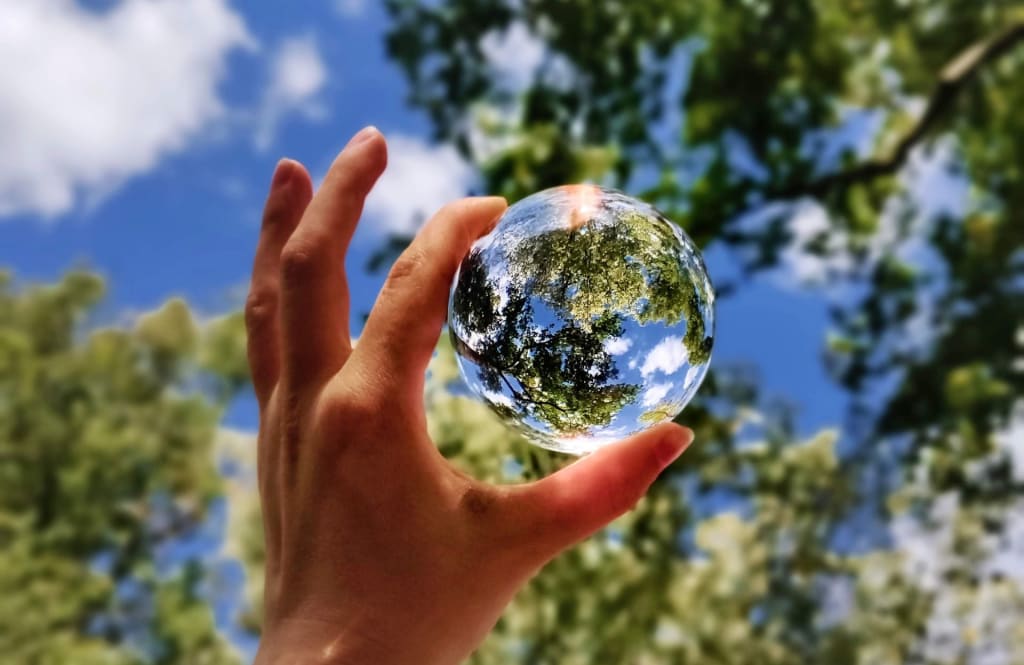Consumerism and Environmental Impact: 10 Ways to Make Your Dollar Even Greener
Let's take a closer look at how we can decrease our negative environmental impact and increase our positive one.

Environmental impact assessments show that consumerism (especially American consumerism) is having a horrific effect on our planet. If you’re reading this, you are probably already concerned about negative environmental impacts; so let's take a closer look at how we can decrease our negative environmental impact and increase our positive one:
10 Ways To Make Your Dollar Even Greener:
The burden in improving our environmental impact actually lies on corporations, which produce the majority of emissions; but there’s still a lot an individual can do for wildlife and environmental conservation. Of course, not everyone can afford to spend their money on being eco-friendly, but that doesn’t mean that those who can shouldn’t, or that every method of saving the environment costs a lot of money. Therefore, here are 10 ways to make your dollar even greener, from buying local to buying a limited-edition print from Untamed Photographer:
- Buy Reusable
- Buy Second Hand
- Buy Sustainably-Made
- Buy Local
- Cut Down on Animal Products
- Take Green Transport
- Bank Green
- Donate to Charities Making Positive Environmental Impacts
- Buy Gifts With Low Environmental Impacts
- Embrace Anti-Consumerism
So, let’s look at how to practice conscious consumerism:
1. Buy Reusable:
Worldwide, we produce 2.12 billion tons of waste per year, which has very negative environmental impacts. Much of this is made up of single use items such as plastic bags, coffee cups, and packaging—items that could be replaced with reusable alternatives. So what single use items can you replace?
- Coffee cups: Bring a reusable coffee cup with you for takeaway coffee (or sit down and enjoy).
- Plastic bags: Buy or make good quality reusable bags to do your shopping.
- Excessive packaging: When possible, bring your own containers or bags so that you don’t have to use single-use ones. When that’s not possible, buy in bulk for less packaging all together.
- Convenience items: Unless you need to use them, items like plastic straws can probably be cut from your life. If you have the time, the same can be said for ready-meals and take out—cooking from scratch is better for you and the planet.
A good way to make sure you always reuse is to keep your reusable cup or bags in your car or handbag.
2. Buy Second Hand:
The negative environmental impact of buying new products is huge. This is especially the case with clothing—fast fashion environmental impact makes up 10% of global carbon emissions. One affordable way of combating this is buying second hand. Thrifting clothes has become trendy, but did you know that you can buy plenty of other items, such as crockery, homewares, and phones second hand?
3. Buy Sustainably-Made:
The main issue with trying to buy new sustainable products is how expensive green products are; but that doesn’t mean you shouldn’t buy them, if you can afford to do so. Some products such as clothing can even be an investment as they’re likely to last longer. Another great investment is the Fairphone, a phone that is fairtrade and repairable. There are, of course, plenty of other products with a very minimal environmental impact (like the limited-edition prints from Untamed Photographer).
4. Buy Local:
When thinking about the environmental impact of fossil fuels, supply chains should be a key consideration in conscious consumerism. Global shipping currently represents 3.1% of global emissions, but if we keep on shopping how we’re shopping, it will represent 10% by 2050. That’s why it’s crucial to buy things (and food especially) that are made locally.
It’s easy to buy fruit and veggies that are locally sourced—simply head down to your nearest farmers market or local fruit and veggie store. The produce is likely to come from local farmers, and it’s cheaper and more seasonal (which is in itself good for the environment). Likewise, events like craft markets are the perfect place to pick up locally-made items.
5. Cut Down on Animal Products:
It takes almost 4,000 gallons of water to produce 2.2 pounds of beef. A lot of animal farming has negative environmental impacts (as well as being an animal rights issue) such as added methane pollution and river pollution, so eating less meat (e.g. trying “meatless Mondays”) and dairy products can help reduce your negative environmental impacts. Eating meat more occasionally may also allow you to support more ethical animal farming methods.
6. Bank Green:
The world’s largest banks have invested 3.8 trillion in fossil fuels since 2016. As the environmental impact of fossil fuels is devastating for our planet, divesting from funds and banks that support fossil fuels is another way to have a positive environmental impact with your dollar. Look for a green bank or a credit union to invest your money in.
7. Take Green Transportation:
Transportation is a large part of the negative impacts of fossil fuels, with transport emissions producing a fifth of the US’ emissions. While not everyone can take advantage of alternative forms of transportation (for example, using active transport is not an option for many disabled people), you can still try to keep your dollars away from the petrol pump by:
- Using active transportation: Walking and cycling are good for both you and the environment.
- Taking public transportation: Public transport, whether bus, train, or ferry also has relatively positive environmental impacts. Trains are also sometimes an option for long distance travel, and one that should be used more often.
- Buying an electric car or a hybrid: If you must use a car (and can afford it), then an electric car or a hybrid is better for the environment than a petrol or diesel car. However, the manufacturing of electric cars is resource intensive, so electric cars are not as green as they could be.
8. Donate to Charities Making Positive Environmental Impacts:
As mentioned above, there is only so much that you can do to reduce your environmental impact on your own. This is why a great way to make positive environmental impacts is donating to charities and organizations that protect people and animals from negative environmental impacts. Some eco-friendly charities to donate to include the Nature Trust of The Americas (NTOTA), Qqs (Eyes) Projects Society, and the Rainforest Conservation Foundation.
You can donate to these charities directly or indirectly by buying a print like Arati Kumar-Rao’s “Plains of the Brahmaputra” from Untamed Photographer.
9. Buy Gifts With Low Environmental Impacts:
Christmas is a time of great negative environmental impacts that represents the peak of American consumerism; but it doesn’t have to be that way. Show your love for your friends and family by gifting sustainably, such as with a print like April Bencze’s “Fishing with Spirit Bears” from Untamed Photographer. Wildlife photography is an important tool in environmental protection and wildlife conservation, so rest assured that you are truly supporting positive environmental change.
10. Embrace Anti-Consumerism:
After an article about how to spend for positive environmental impacts, not buying anything seems counterintuitive. However, spending (even on eco-friendly products) is part of the problem, and even conscious consumerism is consumerism. Every product still has to be assembled and shipped. Therefore, buying less in general will help save the environment. Think to yourself, “do I really need that new gadget or appliance?” Embracing minimalism and anti-consumerism can not only improve your living space but also help the planet.
You can always make your dollar greener, and hopefully this article will give you some ideas for easy ways you can make positive environmental impacts. We can fight the negative environmental impacts of fossil fuels and climate change together. A simple act you can do today is to purchase a print from Untamed Photographer, from which 100% of the profits will go to charities working tirelessly to improve the welfare of animals and environments across the globe.






Comments
There are no comments for this story
Be the first to respond and start the conversation.